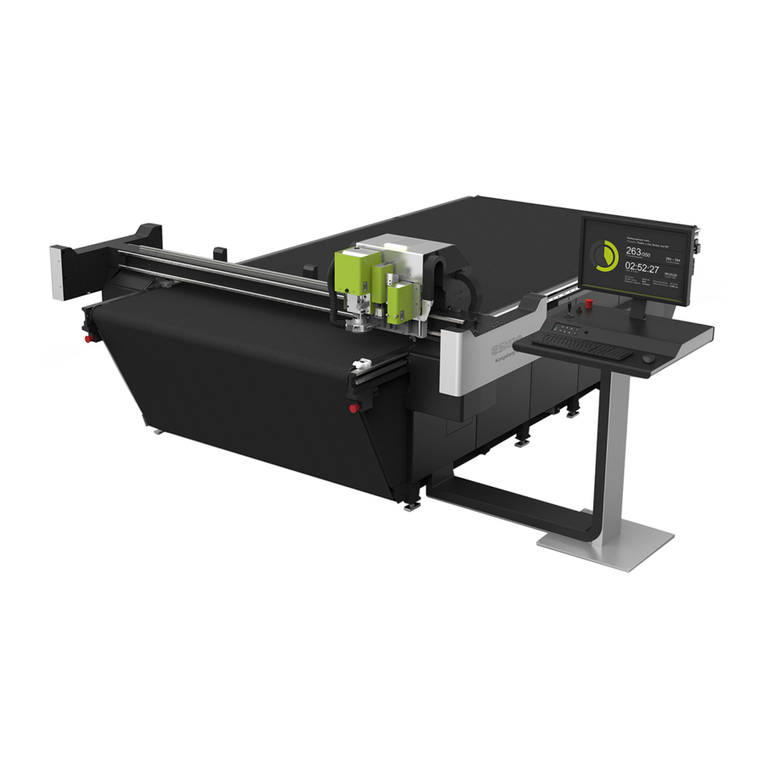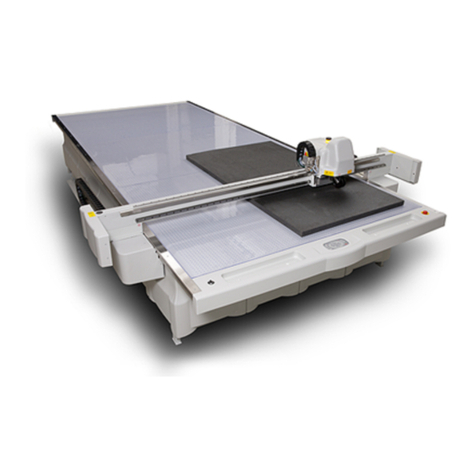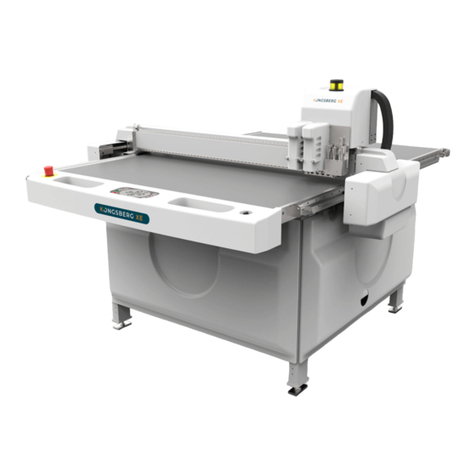
Technical Manual Kongsberg XE/i-XE
3
2.9.17 Tool selection...................................................................................................................... 27
2.9.18 Tool identifier...................................................................................................................... 27
2.9.19 Laser pointer....................................................................................................................... 27
2.9.20 Camera.................................................................................................................................. 27
2.10 FUSES.............................................................................................................................................. 28
2.10.1 MPU fuses............................................................................................................................. 28
2.10.2 Motor fuses.......................................................................................................................... 29
2.10.3 Vacuum motor overload protection ........................................................................... 30
2.11 XE SAFETY SOLUTION................................................................................................................... 31
2.11.1 Safety system blocked schematic .............................................................................. 31
2.11.2 DynaGuard with LE20 controller, detailed description....................................... 31
2.12 TROUBLESHOOTING THE GC900SM CONTROLLER ................................................................... 32
2.13 XE SYSTEM PARAMETERS.............................................................................................................. 33
2.13.1 System id definitions....................................................................................................... 33
2.13.2 Tool id definitions.............................................................................................................. 33
2.13.3 Tool series id definitions................................................................................................. 34
2.14 MOTOR /ENCODER SPECIFICATIONS.......................................................................................... 35
3. SIGNAL LISTS ................................................................................................................................. 36
3.1 SIGNALS TO/FROM CU-MODULES................................................................................................ 36
4. CABLES................................................................................................................................................ 36
4.1 XE10/I-XE10 WITH LE20 SAFETY RELAY................................................................................. 36
5. XE WITH XL-REGISTER.............................................................................................................. 37
6. XE WITH I-CUT (I-XE)............................................................................................................... 37
7. HOW TO... PROCEDURES .......................................................................................................... 38
7.1 INSTALLATION ................................................................................................................................38
7.2 MAINTENANCE................................................................................................................................38
7.3 TRAVERSE BEAM /X-CARRIAGE FIXTURE ON XXE32/54......................................................... 38
7.4 MOTOR ASSEMBLY ON XE10/I-XE10......................................................................................... 39
7.5 HOW TO REMOVE X1/X2 COVERS,XXE10................................................................................ 40
7.6 HOW TO REMOVE X1/X2 GEARBOX,XXE10.............................................................................. 42
7.7 HOW TO REMOVE X1/X2 COVERS,I-XE32/54........................................................................ 43
7.8 HOW TO REMOVE THE Y-CARRIAGE COVER................................................................................. 44
7.9 HOW TO REMOVE THE Z-AXIS MOTOR AND SCREW................................................................... 45
7.10 GEAR ADJUSTMENT,BASIC PRINCIPLES ...................................................................................... 47
7.11 MOTOR PINION ADJUSTMENT........................................................................................................ 48
7.11.1 General.................................................................................................................................. 48
7.11.2 Y-axis motor pinion.......................................................................................................... 49
7.11.3 X-axis motor pinion, XE10 and i-XE10..................................................................... 49
7.12 RACK PINION ADJUSTMENT........................................................................................................... 50
7.12.1 Adjusting X-axis rack pinion on xXE10 .................................................................... 50
7.12.2 Adjusting X-axis rack pinion on xXE32/54.............................................................. 52
7.12.3 Adjusting Y-axis rack pinion on xXE10/32/54....................................................... 53
8. ELECTRICAL DRAWINGS, INDEX......................................................................................... 54
9. MECHANICAL DRAWINGS, INDEX....................................................................................... 55
10. APPENDIX – VACUUM ZONES............................................................................................ 57
11. APPENDIX – HOUR COUNTER AND MAINTENANCE TRACKING..................... 58



































